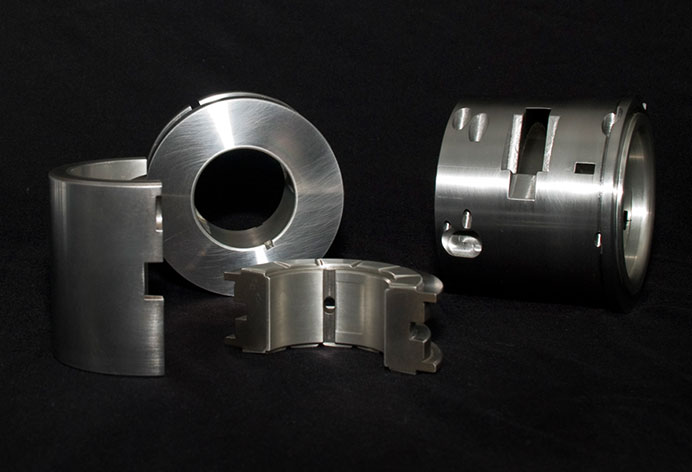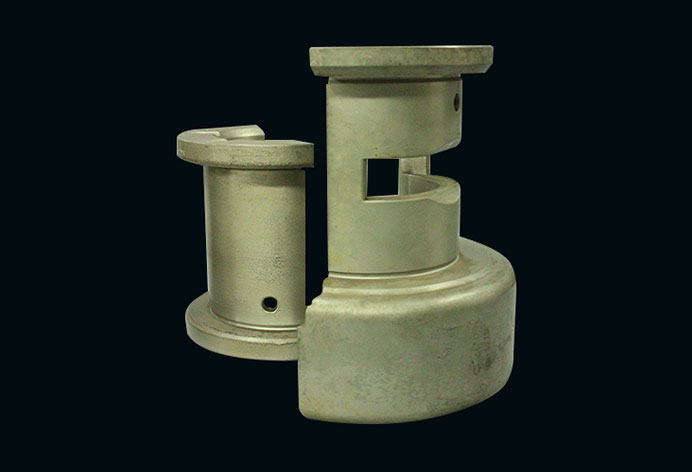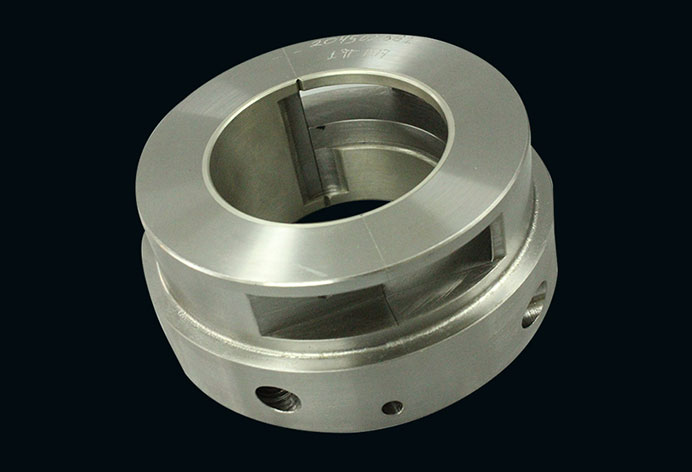BEARINGS
The use of an antifriction bearing is to achieve the mínimum friction between the two components, combined with the absence of problems due to seizure, mechanical failure or distortion and / or fatigue.
Babbitt metal alloys
A white metal alloy should ensure low friction and ability to withstand the load without gripping, distorting, mechanical failure or corrosion.
The required properties are the following:
The antifriction metal alloy must have a low melting point and good melting and casting properties, so that its composition remains unchanged after temperature variations, and is not thermally oxidized. lt must also easily adhere to its metal support, and there must be no noticeable shrinkage during cooling, nor modify its properties or dimensions by aging.
The metal must have a two-phase structure consisting of hard particles in a ductile matrix. The hard particles obviously give hardness to the alloy, supporting the load, while the ductile base provides good formability properties. In addition, the matrix wears homogeneously to a level slightly lower than the hardest phase, allowing the formation of small irrigation channels for lubrication.
Temperature variations during operation must not produce significant deviations in the hardness of the material or in the resistance to fatigue, nor in any of its other mechanical properties.
The alloy must have good wear resistance in the working conditions imposed on the bearing. lt should be noted that the wear resistance is not a property determined by a single metal or several metals, but by the whole of the alloy and by other factors such as temperature, type of lubricant, the presence of abrasive impurities in it, and the geometric shape of the surface.
Babbitt alloys can be base tin or lead base. The former dissipate the heat better, and the latter have better resistance to corrosion by acids, ammonia solutions and other chemical products, although due to their composition they are less and less used. In addition, both contain antimony and copper, which give hardness to the alloy. The rest of the alloying elements may vary depending on the material u sed, causing variations in their properties, but all the antifriction alloys retain the common properties of high ductility, castability and resistance to corrosion. The chemical compositions for these alloys are governed by the ASTM 823 standard.
The Babbitt alloys allow the load to be evenly distributed over the entire surface off the bearing, and thus establish more quickly the required hydrodynamic regime, as they have the capacity to adapt with great accuracy to the hardest surface with which they are in contact.




